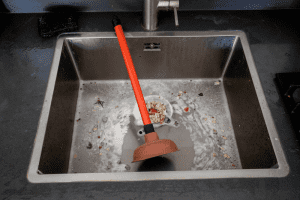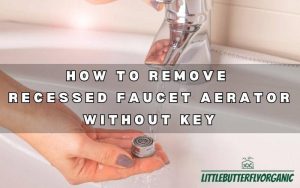When it comes to plumbing, everyone wants materials that will last a long time without costing an arm and a leg. That’s where PEX plumbing comes in. It’s a newer option that’s getting more and more popular for home and business plumbing.
In this article, we’re going to tell you all about this type and help you figure out if it’s the right choice for your plumbing needs.
What is PEX Plumbing?
PEX, or cross-linked polyethylene, is a type of plastic material used in residential and commercial plumbing. It has gained popularity for its flexibility, durability, and cost-effectiveness.
Additionally, PEX plumbing installation involves a series of steps that start with planning the layout, followed by cutting the PEX tubing, making connections, and finally testing the system for leaks. Due to its flexible nature, it’s easier to install compared to its rigid counterparts like copper or PVC.

Why is PEX plumbing bad: Common Causes
While this plumbing has many advantages, there are a few potential downsides to consider.
Chemical
PEX plumbing can have issues with chlorine in the water. Chlorine is often used in city water supplies to kill germs and make the water safe to drink. Still, it can cause problems for PEX pipes over time. When water with lots of chlorine goes through these pipes, the chlorine can react with the plastic material of the pipes. This reaction can damage the pipes over time.
Additionally, you can not see this damage right away. It usually takes a long time, and the speed of the damage can depend on how much chlorine is in the water. If you keep an eye on your pipes and replace any parts that look damaged, you can help prevent problems. It’s also good to know that some newer types of PEX pipes are being made to resist damage from chlorine better.
Sensitivity to sunlight
PEX pipes can be harmed by sunlight, specifically the ultraviolet (UV) light in the sun’s rays. These pipes are not meant to be in sunlight for long periods because UV light can seriously damage them. In detail, UV light can break down the plastic material in PEX pipes, causing them to lose their flexibility and strength. Over time, this can lead to the pipes losing their shape and structure.
The harm from UV light adds up over time, meaning the more a PEX pipe is exposed to sunlight, the more damage it will sustain. That’s why it’s generally not a good idea to use these pipes outside where they will be in direct sunlight. If they are used outdoors, they should be kept covered or otherwise shielded from the sun.
Bacterial build-up
Next, PEX plumbing could attract more bacteria than other types of plumbing materials. This is because the inside of these pipes is a bit rough, so easily makes bacteria potentially latch on and form clusters. As time goes on, these can grow larger and could affect the quality of the water going through the pipes.
This issue with bacteria is something to think about, but it’s important to note that in a plumbing system that’s taken care of and used often, bacteria typically don’t have the chance to grow much. However, if water is allowed to sit still in the pipes for a long time, this might raise the risk of bacteria growth. Regularly running water through the pipes and treating the water properly can help keep the number of bacteria low.
Can’t be recycled
A drawback of PEX plumbing is it can’t be recycled. Once a PEX pipe has done its job and can’t be used anymore, it can’t be turned into something new through recycling. Instead, it usually ends up being thrown away, often in a place like a landfill. This might worry people who care about the environment.

Risk from rodents
Just like other plastics, PEX can be damaged by rodents. Rodents, such as rats and mice, have strong teeth and can chew through these pipes. This can be an issue, especially in places where there are a lot of rodents. If they chew through the pipes, it could cause the pipes to leak. Moreover, leaks aren’t just wasteful; they can also lead to water damage in the areas around the pipes, which could end up being quite expensive to fix.
May affect the water’s taste and smell
Lastly, it’s possible that some of the PEX pipes types can affect the taste and odor of the water. We’re still learning about how this might affect people’s health. But we do know that some people might be more sensitive to these changes, and they might not like the way the water tastes or smells because of this.
Limited longevity
While PEX plumbing offers a fairly long lifespan, typically about 50 years under standard conditions, it falls short when compared to some other plumbing materials like copper. Consider copper pipes as an example. They can last between 70 to 100 years, surpassing PEX by a significant margin.
Read more: Hose Bib Vs Spigot: 6 Key Differences
PEX Plumbing vs. Other Alternatives
There are a few alternatives to this plumbing, with the most common being copper and PVC.
First, Copper is an old favorite for plumbing. It can last longer than PEX but it usually costs more and it’s harder to put in because it’s not flexible. Plus, copper can be recycled, which is better for the environment.
Next, PVC, which is another kind of plastic used for plumbing, often costs less than PEX. But, PVC is less bendy, so it can be harder to fit into tight spots or complex designs. Also, like PEX, PVC can get damaged by sunlight.

Conclusion
PEX plumbing offers a lot of benefits, which is why many people use it in their homes today. It’s easy to work with, can be installed quickly, and doesn’t cost a lot. These are big reasons why so many homeowners like it. But like everything else, PEX isn’t perfect. It can get damaged by chlorine and sunlight, and it might allow more bacteria to build up than other materials. Plus, you can’t recycle it.
So, when you’re deciding what kind of material to use for your plumbing, think about what’s most important to you. PEX, copper, and PVC all have good points and bad points. The best one for you will depend on your specific needs and circumstances.
FAQs
The typical lifespan of PEX plumbing is estimated to be around 50 years. However, this can vary based on several factors. The local water conditions, such as the level of chlorine and pH, can influence the pipe’s longevity. Additionally, the quality of the installation itself can also impact how long this plumbing system lasts.
The chlorine in the water that runs through PEX pipes can speed up the breakdown of the plastic material. This can cause the pipes to become brittle and leak unexpectedly. In some severe cases, the pipes can even burst.
Because PEX pipes are flexible like other plastics, they can be chewed by mice and rats. If these animals find and start biting your these pipes, they could make a big mess by causing water to flood your home.
Read more:




